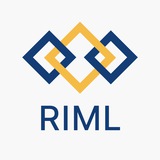tg-me.com/RIMLLab/137
Last Update:
💠 Compositional Learning Journal Club
Join us this week for an in-depth discussion on Compositional Learning in the context of cutting-edge text-to-image generative models. We will explore recent breakthroughs and challenges, focusing on how these models handle compositional tasks and where improvements can be made.
✅ This Week's Presentation:
🔹 Title: A semiotic methodology for assessing the compositional effectiveness of generative text-to-image models
🔸 Presenter: Amir Kasaei
🌀 Abstract:
A new methodology for evaluating text-to-image generation models is being proposed, addressing limitations in current evaluation techniques. Existing methods, which use metrics such as fidelity and CLIPScore, often combine criteria like position, action, and photorealism in their assessments. This new approach adapts model analysis from visual semiotics, establishing distinct visual composition criteria. It highlights three key dimensions: plastic categories, multimodal translation, and enunciation, each with specific sub-criteria. The methodology is tested on Midjourney and DALL·E, providing a structured framework that can be used for future quantitative analyses of generated images.
📄 Paper: A semiotic methodology for assessing the compositional effectiveness of generative text-to-image models
Session Details:
- 📅 Date: Sunday
- 🕒 Time: 5:00 - 6:00 PM
- 🌐 Location: Online at vc.sharif.edu/ch/rohban
We look forward to your participation! ✌️
BY RIML Lab
Warning: Undefined variable $i in /var/www/tg-me/post.php on line 283
Share with your friend now:
tg-me.com/RIMLLab/137
